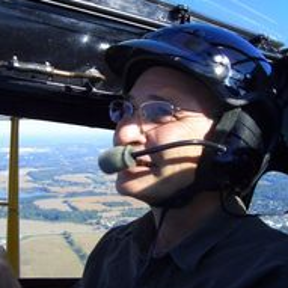Welcome to the Onshape forum! Ask questions and join in the discussions about everything Onshape.
First time visiting? Here are some places to start:- Looking for a certain topic? Check out the categories filter or use Search (upper right).
- Need support? Ask a question to our Community Support category.
- Please submit support tickets for bugs but you can request improvements in the Product Feedback category.
- Be respectful, on topic and if you see a problem, Flag it.
If you would like to contact our Community Manager personally, feel free to send a private message or an email.
Need help modeling a cam slot around and through the edge of a cylinder.
 john_lopez363
Member Posts: 138 ✭✭✭
john_lopez363
Member Posts: 138 ✭✭✭
I have a need to create a cylindrical part that has a cam slot radially and laterally around it's radius. For the life of me I cannot figure out how to model it.
The cam slot start and end needs to be precisely placed at 90 degrees apart radially and 10mm apart laterally. The pic is an example of something similar... it is the cam slot feature that I'm trying to create.
Any help would be greatly appreciated.
Thanks
The cam slot start and end needs to be precisely placed at 90 degrees apart radially and 10mm apart laterally. The pic is an example of something similar... it is the cam slot feature that I'm trying to create.
Any help would be greatly appreciated.
Thanks

0
Best Answers
-
 bryan_lagrange
Member, User Group Leader Posts: 950 ✭✭✭✭✭
See if this helps. All I did was wrap a slot on a tube with the ends 90 degrees apart.0
bryan_lagrange
Member, User Group Leader Posts: 950 ✭✭✭✭✭
See if this helps. All I did was wrap a slot on a tube with the ends 90 degrees apart.0 -
 glen_dewsbury
Member Posts: 1,230 PRO
@john_lopez363
glen_dewsbury
Member Posts: 1,230 PRO
@john_lopez363
Here's one way to do this.
I treated it as sheet metal to make cam sketch easy.
Sketch 1 angle leave open at 5deg or more to make finish easier.
#dev variable is measured long edge in flat view.
Draw cam sketch in flat view.
90deg = #dev/4
Finish sheet metal part and close with replace face.
Go back to sketch 1 and change the angle to .002deg to make error irrelevant. #dev will update on its own.
https://cad.onshape.com/documents/4ca0229f69e5013bbd25e104/w/0721279ba72bb0e922174b8e/e/3819b509d930ca8de663cea3
Guess I forgot to hit post. This has been sitting for a while, LOL1
Answers
Twitter: @BryanLAGdesign
Here's one way to do this.
I treated it as sheet metal to make cam sketch easy.
Sketch 1 angle leave open at 5deg or more to make finish easier.
#dev variable is measured long edge in flat view.
Draw cam sketch in flat view.
90deg = #dev/4
Finish sheet metal part and close with replace face.
Go back to sketch 1 and change the angle to .002deg to make error irrelevant. #dev will update on its own.
https://cad.onshape.com/documents/4ca0229f69e5013bbd25e104/w/0721279ba72bb0e922174b8e/e/3819b509d930ca8de663cea3
Guess I forgot to hit post. This has been sitting for a while, LOL
Twitter: @BryanLAGdesign
@john_lopez363
Just playing now. Wanted to see if could make it all the way around.
https://cad.onshape.com/documents/4ca0229f69e5013bbd25e104/w/0721279ba72bb0e922174b8e/e/08323533a54d1584422ada2c
Twitter: @BryanLAGdesign
Never thought of wrap continuing past 360 deg.
I added a Helix around the cylinder at 1/4 turn and 10mm height, Swept a Surface using the Helix curve as the sweep path and then Thickened (remove) the surface and added some end features to finish up.
https://cad.onshape.com/documents/a4b5d329e8109d54a8f3517e/w/042e7c4a6850105343fb1662/e/1eeeaac9298f0210290cc3d9
While all of these "solutions" obviously work, to be honest they kinda feel like hacks. It would be nice if OnShape enhanced either the Slot Tool so that it could follow a Helix or 3D Spline OR added a new tool to do the same. Perhaps combining some aspects from the Hole Tool and some from the Sweep tool together with the sweep path following 3D curves or splines.
Twitter: @BryanLAGdesign
@bryan_lagrange
Hey John. Bryan's method gets my vote. Doesn't get any cleaner.
When I see the delete parts feature it makes me suspicious of the surfaces in your slot. I suspect that out of parallel and such that could cause the cam to bind or be loose. The nature of the surface you made combined with the thicken as well as straight extrudes does not line up if you look closely. The wrap brings an accurate surface then thickens normal to the surface giving a much better result.
Note that I did not use radius' in my sample, but conics instead for a better acceleration in and out of linear sections.
https://cad.onshape.com/documents/1a9a224235cd8b597d25d1d0/w/cabb1926d5d9b8d2b41ab900/e/648b98b2feb6a50be552062f